
Photo Report : BCATP & Fly-In 2016
British Commonwealth Air Training Plan (BCATP)
Canadian Warplane Heritage (CWH) Museum BCATP Fly-In 2016
A visit to the 2016 BCATP fly-in organized by the CWH Museum as Canada celebrates the 75th anniversary of "The Plan", Ron Cembrowski explains.
BCATP - A Brief Overview
The British Commonwealth Air Training Plan (BCATP), often simply referred to as "The Plan", was a monumental allied aircrew training program established early in the Second World War by the United Kingdom, Canada, Australia, and New Zealand. Canada was selected as the primary location largely due to its vast open spaces and good flying weather, making it ideal for pilot and navigation training. In addition, it was a large distance away from the actual theatre of war in Europe and the Pacific.
On December 17, 1939, the United Kingdom, Canada, Australia and New Zealand officially signed the BCATP Agreement. Training costs were to be shared between the four countries.
It was an extremely ambitious undertaking, initially requiring the construction of new training schools as well as the expansion of numerous existing facilities. The Department of Transport was responsible for finding suitable sites for airfields and training schools as well as overseeing their construction. The Royal Canadian Air Force (RCAF) contracted the Elementary Flying Training Schools (EFTS) to civilian flying clubs and contracted the Air Observer Schools (AOS) to commercial bush pilot and charter flight operators.
The RCAF was to instruct 20,000 aircrew annually in 74 training schools or other facilities. The first schools were opened on April 29, 1940.
On September 30, 1940, the first 39 pilots graduated from No.1 Service Flying Training School (STFS) at Camp Borden, Ontario. On October 28, 1940, the first 50 Air Gunners graduated from No. 1 Bombing and Gunnery School (B&GS) at Jarvis, Ontario.
A new agreement, between the four governments, was signed in June 1942 extending the termination date of the BCATP from March 1943 to March 1945. The number of training schools was increased to 67 and 10 specialist schools for operational and flying instructor training were added. Additionally, the RCAF was to take responsibility for the administration of 27 Royal Air Force (RAF) Schools operating in Canada.
The following is an overview of BCATP aircrew training curriculum:
Manning Depot
Trainees began their air force careers at a Manning Depot. The training period would last up to four weeks. Potential pilots and air observers would carry out preliminary drill and introductory training. After this time the Trainee would be selected for either aircrew or ground crew stream.
Wireless Operators (Air Gunners), designated at enlistment, went directly to a Wireless School.
Initial Training
If selected for aircrew, the Trainee would enter as a potential pilot or air observer. The training period was for 48 days. Training included basic flight theory, navigation, armament, and decompression chamber testing as well air force administration, etc., and initial testing in a Link Trainer. The Trainee would graduate as Leading Aircraftman.
Pilot Stream:
Elementary Flying Training School
The pilot Trainee would receive basic flying instruction, over a period of 48 days, on a basic trainer such as the de Havilland Tiger Moth, Fleet Finch, Fairchild Cornell, or Boeing Stearman. Elementary Flying Training Schools were run by flying clubs, with civilian instructors under contract to the RCAF. RCAF personnel supervised the training.
Service Flying Training School
The pilot Trainee would receive training over a period of 72 days, including advanced flying instruction, aerobatics, and night flying. The Service Flying Training Schools were military facilities run by the RCAF or RAF. Trainees selected for Fighter Pilot stream would train on the North American Yale or the North American Harvard. Trainees selected for Bomber Pilot stream would train on the Avro Anson, Airspeed Oxford, or Cessna Crane. The Trainee would graduate as Sergeant Pilot and would receive their Pilot's Wings.
Observer Stream:
Air Observer School
The training period was 14 weeks and included photography, navigation, and armament training. Training was conducted using the Avro Anson. The schools were run by civilians but the instructors were RCAF personnel.
Bombing and Gunnery School
The training period was 6 weeks and provided intense instruction in bomb aiming techniques and aerial gunnery. Training was done using the Avro Anson, Fairy Battle, Bristol Bolingbroke, or Westland Lysander. The Trainee would graduate as Sergeant Observer and would receive their Observer's Wing.
Air Navigation School
The training period was 4 weeks of intense navigation instruction. Training was done using the Avro Anson. This was the final phase of training for the Air Observers.
Wireless Air Gunner Stream:
Wireless School
The training period was 20 weeks with instruction in Morse code and radio communication. The Trainee received a Wireless Badge upon successful completion of the course.
Bombing and Gunnery School
The training period was 4 weeks. Training was done using the Avro Anson, Fairy Battle, Bristol Bolingbroke, or Westland Lysander. The Trainee would graduate as Wireless Operator (Air Gunner) with the rank of Sergeant and would receive their Air Gunner's Wing.
- Total BCATP Schools, by the numbers, in Canada:
- 7 Initial Training Schools
- 26 Elementary Flying Training Schools
and 6 Elementary Flying Training Schools run by the RAF - 19 Service Flying Training Schools
and 10 Service Flying Training Schools run by the RAF - 10 Air Observer Schools
- 1 Central Navigation School
- 2 Air Navigation Schools
and 3 Air Navigation Schools run by the RAF - 10 Bombing and Gunnery Schools
and 1 Bombing and Gunnery School run by the RAF - 1 Central Flying School
- 3 Flying Instructor Schools
- 1 Instrument Flying School
- 1 Naval Air Gunnery School
- 2 General Reconnaissance Schools
- 6 Operational Training Units
and 4 Operational Training Units run by the RAF - 4 Wireless Schools
The BCATP reached its peak of air training across Canada by the end of 1943, with 104,000 personnel in 4 Training Commands, including 40,000 RAF personnel at 27 sites.
In its 5 year life (1940 - 1945) the BCATP produced 131,553 aircrew, including pilots, navigators, wireless operators, and air gunners.
| BCATP - Aircrew Trained in Canada | |||||
|---|---|---|---|---|---|
| Trade | RCAF | RAF/RN | RAAF | RNZAF | Total |
| Pilot | 25,747 | 17,796 | 4,045 | 2,200 | 49,808 |
| Navigator | 12,855 | 13,882 | 1,643 | 1,583 | 29,963 |
| Air Bomber | 6,659 | 7,581 | 799 | 634 | 15,673 |
| Wireless Operator / Air Gunner | 12,744 | 755 | 2,875 | 2,122 | 18,496 |
| Naval Air Gunner | 704 | 704 | |||
| Air Gunner | 12,917 | 1,392 | 244 | 443 | 14,996 |
| Flight Engineer | 1,913 | 1,913 | |||
| Totals | 72,835 | 42,110 | 9,606 | 7,002 | 131,553 |
| Reference: The AT-6 Harvard, Len Morgan, June 1966 (original source: Wing Commander R.V. Manning, Air Historian, DND, Ottawa) | |||||
As well, thousands of ground crew were trained, including aero engine mechanics, air frame mechanics, instrument technicians, administration staff, and many others. Without the contribution of these men and woman, "The Plan" would never have succeeded.
A final comment about the BCATP is the lasting legacy it provided to the modern Royal Canadian Air Force. The BCATP Agreement signed by the United Kingdom, Canada, Australia, and New Zealand on December 17, 1939, contained a section (Article XV) that stipulated that BCATP graduates from Australia, Canada, and New Zealand were to be assigned to squadrons in their respective national air force or be identified with their specific national designation if assigned to a different air force.
This eventually resulted in the formation of the "400 block" squadrons overseas. Canada created a total of 44 squadrons, Australia created a total of 17 squadrons, and New Zealand created a total of 6 squadrons, under Article XV.
The first of these RCAF squadrons to be created was 403 (Fighter) Squadron, which formed on March 1, 1941 at Baginton, UK. It was initially equipped with P-40 Tomahawks but transitioned to Spitfires after a couple of months. A further twenty "400 block" RCAF squadrons were formed in 1941. Three Canadian squadrons already based in the UK were formed by renumbering on March 1, 1941; No.110 Sqn was renumbered to 400 Sqn at Odiham, No.1 Sqn was renumbered to 401 Sqn at Digby, and No. 2 Sqn was renumbered to 402 Sqn at Digby. The remaining RCAF "400 block" squadrons were formed throughout the war into early 1944.
It is for this reason that Canada is celebrating the 75th anniversary of the BCATP and the formation of the first of the "400 block" RCAF squadrons (1941 - 2016).
CWH Museum BCATP Fly-In 2016
On May 28, 2016, the Canadian Warplane Heritage (CWH) Museum hosted a BCATP Fly-in. This was not an air show and no air displays were scheduled. Aircraft types that were involved in the BCATP were invited for the day.
Regular museum admission rates applied and paid rides were being offered on a number of the aircraft in attendance including the Tiger Moth and the Harvard.
In addition to a variety of airframes from the CWH Museum collection, the static ramp line-up of these "Yellow Wings" training aircraft also included aircraft from the Canadian Harvard Aircraft Association and Collingwood Classic Aircraft Foundation plus a number of privately owned models. Although some of the participant aircraft were not used in the BCATP they certainly met the spirit of the event. Many of the other airframes, can trace their histories to WWII while others were built post-WWII into the late 1940s and 1950s.
Unfortunately there were some aircraft cancellations due to bad weather concerns.
The afternoon brought a few "non-Yellow Wings" arrivals, including a privately owned North American T-28C Trojan and a privately owned BAC 167 Strikemaster. As well, an RCAF CH-146 Griffon helicopter from 424 (Transport & Rescue) Squadron, 8 Wing Trenton, made a stop during a routine training run. Although not a scheduled part of the BCATP Fly-in they were all a welcome sight just the same.
A walk through the museum revealed the Avro (Mynarski Memorial) Lancaster, the North American B-25J Mitchell, the Westland Lysander, and the Fairy Firefly undergoing their spring inspection and maintenance, prior to the 2016 air show season.
Also under restoration to flying status, and actively being worked on, were the Bristol Bolingbroke and the Grumman Avenger AS 3.
A total of 626 Bristol Bolingbrokes were manufactured in Canada between 1939 and 1943. The CWH Museum's Bolingbroke Mk IVT is currently being rebuilt from the remains of eight aircraft, salvaged from Manitoba in the mid 1980s. Once the restoration process is complete, the aircraft will be painted in the colours and markings of RCAF No.119 (City of Hamilton) Squadron.
The CWH Museum's Avenger is a TBM-3E, built by General Motors in 1945. When production ceased at the end of the war a total of 9,839 Avengers had been built; 2,293 by Grumman and 7,546 by General Motors Eastern Aircraft Division. In 1950 the Royal Canadian Navy (RCN) were equipped with modernized Avengers. The aircraft flew with VS 880 and VS 881 (Anti-Submarine) Squadrons. Once completed the museum's Avenger will be finished in the colours of the RCN, aircraft serial 86180 (NAVY 324).
- References used:
- RCAF Squadrons and Aircraft, S.Kostenuk and J. Griffin, 1977 (pp. 18-19, 75-80)
- Canadian Military Aircraft, J.A. Griffin, 1969 (pp. 670-672)
- The British Commonwealth Air Training Plan, I. Norman Smith, 1941
(front sequence chart, pp. 1-22) - Pilots, Observers and Air Gunners for the Royal Canadian Air Force
(WWII RCAF recruiting booklet - no date) - Answering Your Questions - RCAF Air Crew
(WWII RCAF recruiting booklet, King's Printer -Ottawa - no date) - The Squadrons of the Royal Air Force and Commonwealth 1918-1988, James J Halley (pp. 485-518)
- Canadian Warplane Heritage website, Aircraft Collection List
- Royal Canadian Air Force website, CF-18 Demonstration Team
Report and photos by Ron Cembrowski ( view portfolio )
Last Modified: 2 July 2016
Update log
4 Jul 2016 minor edit
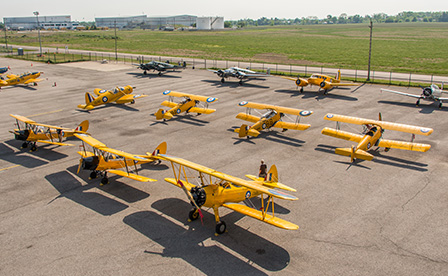







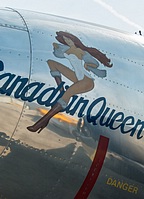





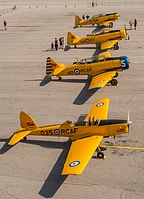





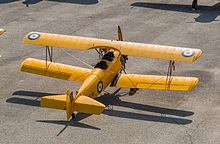
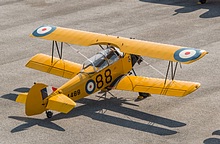
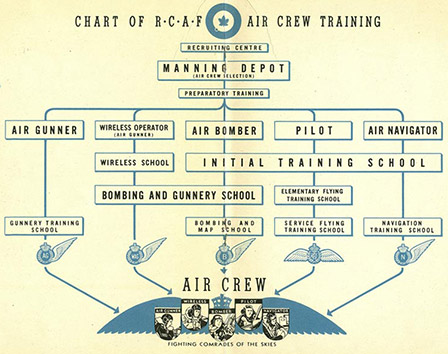
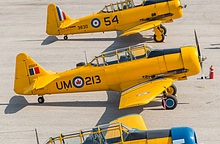
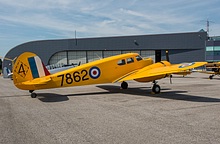














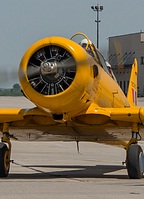



























 Back to Index
Back to Index